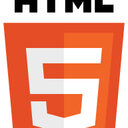Diallyl Trisulfide inhibits breast cancer stem cells via suppression of Wnt/β-catenin pathway.
Słowa kluczowe
Abstrakcyjny
Cancer stem cells (CSCs) play a central role in the development of breast cancer. The canonical Wnt/β-catenin signal pathway is critical for maintaining CSCs characteristics. Diallyl trisulfide (DATS), a natural organosulfur compound from the garlic, exhibits effective antitumor properties. However, the role of DATS in regulating breast CSCs activity and the underlying molecular mechanisms remain obscure. In the present study, we reported that DATS efficiently inhibited the viability of breast CSCs as evidenced by reducing turmorspheres formation, decreasing the expression of breast CSCs markers (CD44, ALDH1A1, Nanog, and Oct4), as well as inhibiting proliferation and inducing apoptosis. Furthermore, we showed that DATS downregulated the activity of Wnt/β-catenin pathway, while LiCl-triggered Wnt/β-catenin activation diminished DATS inhibition on breast CSCs. Taken together, our results illustrated that DATS suppressed breast CSCs through inhibiting Wnt/β-catenin pathway activation. These novel findings could provide new insights into the molecular mechanisms of breast CSCs regulation as well as its target intervention and might provide new strategies for preventing and treating breast cancers.


